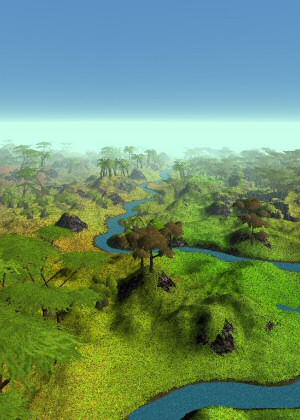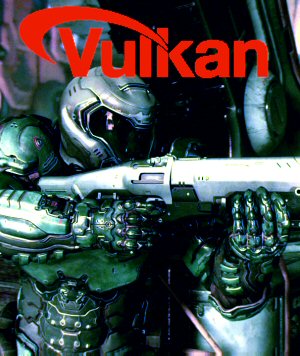I spent a lot of time the last few weeks talking about the intuitive difficulty curve of RollerCoaster Tycoon. With few exceptions, a new player can quickly grasp the basics of the game and even start experimenting with different tactics to win the long list of scenarios. By contrast, 2001’s Tropico features a scenario list of inconsistent difficulty bordering on bugged labels and practically non-existent tutorials. Further, the game shipped and received multiple expansions with incorrect information in the manual and the game’s info text. How in the world did Tropico not only become a beloved classic but manage to generate sequels through 2019, with Tropico 7 still in development (though apparently troubled)? I think mainly aesthetics, tongue-in-cheek humor, and quite simply; despite the obvious failures, brilliant functionality that makes the game *fun* to play…even if you aren’t accomplishing anything.
In fact, especially if you aren’t accomplishing anything: Tropico 1 had a free-play mode where you just built whatever you wanted. It wasn’t an absolute sandbox; you still had to meet various tiered requirements. There was no technology tree, but you had to build (i.e. *complete* the building of) a Logging Camp before you could build a Lumber Mill, and you had to build a Power Plant along with the Lumber Mill before you built a Furniture Manufacturer. Oh, and of course you had to have enough high-school-educated workers available to staff the Lumber Mill and the Furniture Manufacturer, which means you better already have a High School built; those aren’t free. And you have to have student Housing since they aren’t working enough to pay rent. Food from your Farms and Fisheries are always share-and-share-alike for your Tropicans, which automatically makes the United States a bit suspicious of you, so you better have that Furniture Manufacturer shipping out copious rattan chairs and cheap end-tables for the American consumer. That means you will probably have to keep the workers’ pay high, but if the income disparity between the uneducated and the high school and college educated workers grows too much, the Soviet Union may come knocking on your door. I’m sure you don’t want a worker revolution to kick off. Regardless of all that, your Tropican citizens really just want access to food, religion, entertainment, health care, and decent-quality housing that doesn’t cost too much.
Tropico is a wonderfully complex game that fails almost completely at handing you simple, understandable control over this mess. But gosh is it fun.

The main menu has four choices: Tutorial, Game, Extras, and Exit. Exit is self-explanatory, Extras leads to high scores and some…extras. Game takes you to another menu that lets you choose Free Play, Scenarios, or “Load a Saved Game.” Tutorial is really nothing but a direct link to a special Scenario that has extra text overlaid to provide information about playing the game. The most basic of the basics. In fact, every Scenario has instructions and special messages, but normally they are presented in a pop-up info box that matches the interface instead of an ugly text-only green box. I don’t know why they couldn’t just do that. My theory is that game-testers said there needed to be a tutorial, and the programmers at short-lived developer PopTop didn’t understand why. This tutorial is primarily focused on how to use the interface, and is able to overlay the game screen with arrows and circles, as well as respond to the player’s mouse clicks. Three “tutorial-style” Scenarios included with the scenario list could have used these features, but only sporadically implement any interactive functionality.
For example, the Scenario “El Presidente’s First Day,” a good starting point, teaches you about the various types of Housing you can build. The Scenario prompts you to build “one of each type of Housing,” and promises to tell you about each as you build them. The order you build them in is left up to you. But as instructed, no matter which Housing unit is built, you will receive a pop-up info screen (again, that matches the interface) describing that type of Housing. The Scenario “El Presidente’s Second Day” is designed to instruct you on how to manage the economy of your island. Various info screens will give you instructions and steps to follow, yet completion of the steps don’t trigger a new info screen. Instead, in this scenario they are time-based. After enough time has passes a new info screen will appear and literally say “I hope you did what I told you do. Now it’s time to move on to the next step.” This inconsistency leads me to believe even these “tutorial” Scenarios were likely afterthoughts.
This does bring us directly to the inconsistent and mislabeled difficulty levels. There is a third “El Presidente’s…” Scenario that is *also* confusingly about proper money management. All three of these Scenarios are labeled “Very Easy,” the only three “Very Easy” Scenarios in the game. Yet only the third Scenario actually has a simple win-condition, even if the instructions don’t tell you what it is.

El Presidente’s First Day is about Housing, as I said. The first step is actually to build a Power Plant, something you don’t normally do until later in the game. Your most basic structures don’t require electricity, the Power Plant is much more expensive than your budget can handle early on (unless a Scenario explicitly plans for you have a lot money to start with), and Power Plants require College-educated Electrical Engineers to operate, either home-grown through your own expensive University that you don’t have yet, and won’t have for a while, or contracted from a foreign country which requires an expensive “Finder’s Fee.” But as two types of Housing require electricity, the Scenario gives you the money to build one. With an abundance of flat, open terrain near your capital, you can immediately place the Power Plant and set the game speed to “Very Fast.” Numerous variables contribute to the construction speed, most importantly Tropico is the type of sim in which you can’t directly control your citizens (there are specific caveats). In this particular play-through, my Construction Office completed the building in 14 months.

The next step is to build every type of Housing. I have enough funds left to go ahead and place one of everything. I already know I’ll have to continue the Scenario past this single step, so I try to stay out of the way of the farms and keep to the existing layout of the town. Then it’s back to “Very Fast,” and clicking through the info screen that pops up for each type of Housing as it completes. This took 5 more years. I likely could have shaved a year off if I used the construction priority settings to make sure the entire Construction Office always worked on one building at a time, but in most Scenarios I have found this to be unnecessary in clustered locations. The workers will prioritize buildings by distance from the office, so they will tend to all travel to the same building according the same calculation. Usually.
Once you have completed one of each type of building, you are given the final instruction: raise your “Housing Quality” level to “60.” After just completing one of each kind, the last couple of which barely have any residents, the current “Housing Quality” is 36. Here’s the thing: only 3 of the 7 available Housing units reliably provide a Housing Quality of 60 or higher; the House, the Luxury House, and the Condominiums. The latter two of which require electricity to function properly. The Apartment Complex (the building with red pinstripes) *can* reach 60, but only with lots of help and the right conditions. For the purposes of this exercise, the Apartment Complex should be considered your minimum quality. You’ll want to get rid of the Tenement, Country House, and Barracks you built as soon as you have better housing available. But only after, as of course, any of those options provide better housing than a corrugated-tin-and-driftwood lean-to. You will also, obviously, want an abundance of Luxury Houses and/or Condominiums…or least a predominance of plain Houses.

I tried replacing a handful of Luxury Houses with a second Condominium this time, and I’m not sure it did me any favors. I also tried stratifying my rent early on, but as you really want to get as many people in the best housing possible in this Scenario, in the end I abandoned that idea. Luxury Houses and Condominiums were priced so that *any* paired couple or single educated citizen could afford to move in. Houses and Apartment Complexes were priced for any employed worker to afford. Country Houses were built solely to get the unemployed out of shacks and into some kind of decent housing. I have actually made all Housing free quite often. This keeps the communist faction (and the Soviet Union) off your back…in fact if you get a Diplomatic Ministry up and running early, then buddy-up to the Soviets, you can get 1/2 price on building Tenements and Apartments. I would still avoid tenements if possible, but in some Scenarios I have played, housing quality just doesn’t come into play much. The Scenarios are highly “gamified.” Much like the Scenarios in RollerCoaster Tycoon I liked least, they use a lot of arbitrary conditions and challenges rather than relying on simple, good game-play. It took another 11 years to finish this Scenario, although if I had stuck with my original plan of spamming Luxury Homes and set the prices lower on both them and regular Houses, I suspect I could have finished it 2 or more years sooner.
So, El Presidente’s First Day is pretty straightforward, right? I think all three of these scenarios are limited to 30 years, so you can actually fail this scenario if you don’t get your Housing Quality up by 1980. So is this “Very Easy?” I’m not sure I would put it quite like that, maybe “Easy,” though. You’re probably wondering why I’m complaining. Well, let’s see what El Presidente’s Second Day is all about.

Starting with this map, you are instructed to convert 2 of your 4 farms from growing Corn to growing Pineapple. While both crops can be exported, Corn is typically the least valuable commodity, while Pineapple usually brings a higher price. As a bonus, Pineapple can be canned in a Cannery, which commands an even higher price. File that note a way for later. Both food items can, of course, still be eaten by your Tropican citizens as well when they get hungry. As noted previously, this Scenario doesn’t respond to your actual actions; the prompts are timed. After a bit, you receive the next instruction, to increase the wages of uneducated workers in order to attract immigrants (remember “i” = “incoming” = “immigrant,” “e” = “exit” = “emigrate.”) The Scenario also tells you to increase the wages of your palace guard, because you want those people rock-solid-loyal under all circumstances. The doctors, priests, and other educated workers are making enough money by default. Having completed that step, presumably, you are tasked with building another Construction Office, for some reason, and are given a location near which to place it. A short time later the next few steps begin: construct the three other resource-gathering/uneducated job centers: a mine (iron is available on a nearby hill, right next to where you built the Construction Office if you followed the suggestion); a Logging Camp (likewise located near the new Construction Office); and a Fishing Wharf (just about all of the coastline of this small island is equidistant from the two Construction Offices. Also, “wharf” is a funny word, and is the main reason I never could take Worf seriously.) A supplemental note received following the completion of the Fishing Wharf informs you the fish caught there can not only feed your Tropicans, but also supply a Cannery, just like Pineapple!
You are then instructed to “Grow your economy.”

You are NOT told what the win condition is. I probably should have guessed after the first failure. At the end of 1980 (you start in 1950) I received the message that I *FAILED.* I earned (approximately) $550,000 and was being kicked off the island. Something tickled my memory that, much as every Scenario in RollerCoaster Tycoon requires you to maintain a minimum Park Rating, I need to reach a minimum level of average happiness among my Tropican citizens. My next try I was able to keep happiness right around 60, which is, in my experience, pretty darned good. This time I *FAILED.* I earned around $650,000 and was kicked off the island. About then the shoe dropped, and I realized it was telling me how much money I earned because I need to earn *more* than that. Note that this isn’t how much money is *in* your bank account in 1980; it’s how much revenue in total your Tropican businesses have earned in 30 years. But how much am I supposed to earn? The game still isn’t telling me. And it *won’t* ever tell you, but it’s a million dollars. That’s how much revenue you have to generate of 30 years; a million dollars. Seems obvious in hindsight. But…yeah. The scenario doesn’t tell you the win condition. You just…keep Doing It Again, Stupid until you beat it. “Moderate” difficulty at best, and that’s only because this makes sense in the context of how these scenarios are designed to be played.

The third of these scenarios, El Presidente’s Third Day, doesn’t actually teach you anything that isn’t already in the manual. In fact, it leaves off one of the most important parts of the lesson it is trying to teach you. The goal of the third scenario is to “store” as much money as you can in your private Swiss bank account over 5 years, starting from when you receive the instruction (this occurs after you have built a bank, staffed it, and built a hotel.) The scenario instructs you to use banks set specifically to skim money into El Presidente’s private funds. Bankers must be college educated (this made sense a few decades ago, trust me) so you either have to “headhunt” people from foreign countries or build a college-supporting infrastructure. Probably go with the first option, since you only have 5 years. The bank skim works by taking a little off the top of every export shipped. The more bankers you have, the more effective this is. *But before you build anything else,* go to the Economic Edicts and issue the “Special Building Permit.” This raises the price of everything you build on the island, but the extra amount goes straight to your Swiss bank account. However, to be honest, I’m not sure this money counts in this Scenario. It would explain why the “Special Building Permit” isn’t mentioned, but why leave that out in a scenario about re-directing money for personal gain? I wonder if the people designing the scenarios didn’t actually have a full understanding of the mechanics available in the game. Anyway, it’s a moot point in the end either way, because the game ends after 5 years and you “win” no matter what. You *do* receive a score based on how much money you were able to store, for what that’s worth. I’m not sure you can actually *fail* this scenario. To me this is the epitome of “Very Easy.”
To close out the argument, I will mention the first “Easy” difficulty Scenario, “Back to the Skies.”

There is a story for this Scenario, but it doesn’t actually matter, because the conditions are arbitrary. The TLDR; is that you have to build an airport, a very expensive building, within 20 years. You start with a Dock, a Construction Office, and a Logging Camp. You can beat this scenario in the normal way, but it’s not *easy.* In fact, it’s *incredibly* hard to build an economy that can pay for a $15,000 Airport in the first couple of years. I say “first couple of years” because airports are the biggest thing in the game and take a *long* time to build; around a decade with one Construction Office. You wanna know the way to beat this scenario “easily?” Before every Scenario starts, you set the level of “Random Events.” Random events can vary depending on the terrain, but more often than not will be a Hurricane. The levels are “Off,” “Rarely Occur,” “Sometimes Occur,” “Regularly Occur,” “Frequently Occur,” and “Are You Loco, Presidente?” You want that last one. After your “first” (yeah, *first*) Hurricane sometime in the first few years of the Scenario, “The International Community” will give you $20,000 – $30,000 to rebuilt your infrastructure. Immediately place your airport, prioritize it, and only reduce that priority if you *must* build something else to keep your people going for for the next 15 years. You *will* face one or two election challenges, which means you can’t be so far behind on minimal housing and food (and maybe religion and healthcare) that you get voted off the island. After each Hurricane, you will likely have to rebuild most if not all Housing, and some infrastructure. You will never have to rebuild your unfinished Airport, though.
Now, don’t you feel dumb for not realizing that was the way to beat this Scenario? Doing it any other way is *almost* impossible. This is the *only* “Easy” solution. To change the Random Event slider before you start the scenario.
So that’s it. If players were restricted to the “Challenge” mode of Tropico, I don’t think this game would have had an expansion, let alone six sequels with expansions of their own. But the Tropico series has always nailed down the “atmosphere” of the game, and that’s really the saving grace. No, that isn’t giving the aesthetics enough credit. The “feel” of the game was enough to carry it on to better iterations. It is *still* enjoyable to just have available to sandbox a 1950’s Caribbean island sometimes. Why do you think I revisited Tropico 1 instead of jumping on the recently-acquired Tropico 4?
See you next week!

Project Frontier

A programming project where I set out to make a gigantic and complex world from simple data.
Are Lootboxes Gambling?

Obviously they are. Right? Actually, is this another one of those sneaky hard-to-define things?
What Does a Robot Want?

No, self-aware robots aren't going to turn on us, Skynet-style. Not unless we designed them to.
Marvel's Civil War

Team Cap or Team Iron Man? More importantly, what basis would you use for making that decision?
What is Vulkan?

There's a new graphics API in town. What does that mean, and why do we need it?
 T w e n t y S i d e d
T w e n t y S i d e d

Having never played it and not really being interested in sims, I can attest to the power of the game’s aesthetics; it’s basically the only series in the genre that makes me think “oh yeah, I should play that sometime” every time I’m reminded of it
I personally know many people who own one or more of the titles and have never played more than a few minutes.
That is me. I have purchased quite a few of these games and never played them more than a bit. Granted, I do that with a lot of games, but still.
It’s not that I don’t enjoy them. I have never played one of them long enough to realize if I’d enjoy them. But I’m just so drawn to the aesthetics I had to buy them.
Tropico has a great prescence in the gaming world, I think most people who have been around for any length of time know that it exists. I’ve never played it though, so this promises to be an interesting series too!
I wasn’t sure if there was going to be much content, but I have two things going forward. First, I do in fact own Tropico 2, although I’ve never even installed it that I can remember. It came in a pack with Tropico Gold on Steam several years ago. Or it might have been a Steam activation purchased through Impulse; that rings a bell. I did have the original retail version of Tropico at one time, but sold it or threw it away. Or just lost it. I also have Tropico 4 which is supposed to be the best iteration of the original game, according to some people.
Also, I am learning that most scenario win conditions *may* boil down to simply spamming whatever you need the most of. Like in the housing scenario: best way to beat it is to just build luxury houses and plain houses. Make some percentage free after you give everybody a month to move it that can pay some rent. I just figured out how to beat the next “Easy” Scenario, Spring Breakout, last night. You gotta get a ton of money from cheap tourists, specifically “spring breakers.” Just build a ton of Cheap Hotels. Like, ten of them. Set the rate to 90% occupancy. Build a pub or restaurant for every hotel. Make the price cheap. For best results, it looks like you need to add other tourism-money-makers, and you’ll want a fully-staffed police station near every 4 hotels (this is an entire sub-game in education). And, of course, you have to meet your citizen’s basic needs in order to stay in power. Providing free, inexpensive housing, 1 church, and 1 clinic met these *requirements*, all other improvements were primarily to make everything more efficient. I’ll actually cover this scenario in detail next week. Once I figured out the one neat trick, it became a fun scenario. *But I point out once again:* WHEN YOU HAVE DISCOVERED THE TRICK. I don’t think it is remotely intuitive to build more cheap hotels than any other service or amenity on the island. But, as with several other ridiculous requirements, I can actually see the argument for this in the slightly-twisted world of this game.
I remember being baffled by Tropico the couple of times I tried to play it. Unclear instructions probably contributed, but I was struck by how I didn’t seem to be having an effect on what was going on or what I was trying to acheive.
Game: El Presidente, the people are complaining about a lack of housing! They have built shacks!
Me: Oh, okay, Let’s build some houses. Oh, rent. Okay, let’s charge $3 to live in the apartments and raise their wages to $8.
Game: El Presidente, the people are complaining about a lack of housing! They have built shacks!
Me: What, still? Okay. How about $2 rent?
I return to that section of the map. Someone is protesting about the lack of housing, outside a corrugated iron shack – that they’ve built right next to an empty house.
Also:
I laughed.
Sadly, I don’t think a lack of education or knowledge on the banker’s part is the problem…
Here’s what I THINK I have figured out: For any given benefit to satisfy an outstanding need properly, you have to meet multiple requirements. There is an important algorythm that connects the *distance* of housing to work that seems to be very sensitive. Maybe even down to the pixel. Not having any housing that satisfies this algorythm can cause the same behavior as there being *no* housing available. Other algorythms come into play at different times, like how far the Tropican has to walk for food and entertainment.
The “bankers” comment is really about when I was young, working at the bank seemed to require secondary education at every level. Just to be a “teller” you had to have at least a two-year degree. The actual loan officers had to have 4-year finance degrees, and to be on the board (this was privately-owned, not publically-traded) you had to have a masters. I know some of this was where I lived when I was young, which was a rural, conservative area operating decades behind the rest of the world. When I moved away for college, I was shocked to see that large chain banks hired my fellow students as tellers. By the 2000’s, I was seeing young people still working for any degree as loan officers. I could write an entire essay on the multitude of reasons why I think this has happened, but I certainly agree that no-longer requiring secondary degrees in banking is *NOT* responsible for any of the problems with banking in the 21st Century.
You mentioned at one point that these El Presidente’s First Days missions felt like an afterthought. That’s because they were. I’ve been around this game for quite awhile and just recently booted it back up for some nostalgia kicks and noticed that these missions had been added. They were definitely not part of the original game.